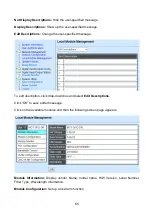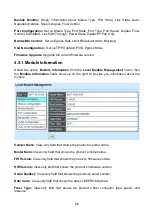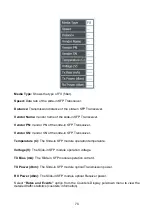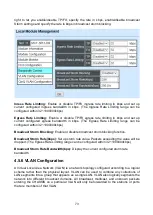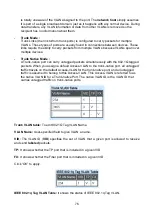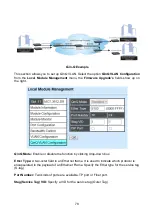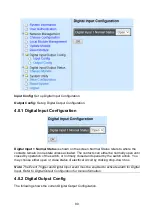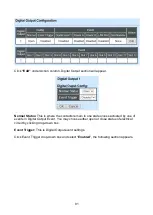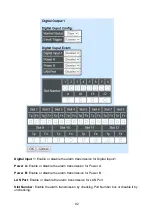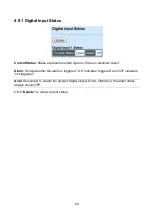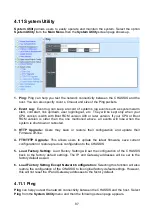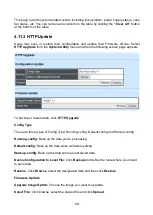
77
VLAN Name:
View-only filed that shows the VLAN name.
VID:
View-only filed that shows the VID.
TP:
View-only filed that shows whether the TP port that is included in a given VID.
FX:
View-only filed that shows whether the fiber port that is included in a given VID.
4.5.7 QinQ VLAN Configuration
The IEEE 802.1Q double tagging VLAN is also referred to Q-in-Q or VLAN stacking (IEEE
802.1ad). Its purpose is to expand the 802.1q VLAN space by tagging the inner tagged
packets. In this way, a “double-tagged” frame is created so as to separate customer traffic
within a service provider network. As shown below in
“Double-Tagged Frame” illustration, an
outer tag is added between source destination and inner tag
at the provider network’s edge.
This can support C-VLAN (Customer VLAN) over Metro Area Networks and ensure
complete separation between traffic from different user groups. Moreover, the addition of
double-tagged space increases the number of available VLAN tags which allow service
providers to use a single S-VLAN (Service VLAN) tag per customer over the Metro Ethernet
network.
Preamble
SFD
D
A
S
A
Type/LEN
PAYLOAD FCS
Original frame
Preamble
SFD
D
A
S
A
TAG
TCI/P/C/VID
Type/LEN
PAYLOAD FCS
802.1q
Frame
Preamble
SFD
D
A
S
A
Outer Tag
or S-Tag
Inner Tag
or C-Tag
TCI/P/C/VID
Type/LEN
PAYLOAD FCS
Double-
tagged
Frame
Double-Tagged Frame
As shown below in
“Q-in-Q Example” illustration, Headquarter A wants to communicate with
Branch 1 that is 1000 miles away. One common thing about these two locations is that they
have the same VLAN ID of 20, called C-VLAN (Customer VLAN). Since customer traffic will
be routed to service provider
’s backbone, there is a possibility that traffic might be forwarded
insecurely, for example due to the same VLAN ID used. Therefore, in order to get the
information from Headquarter to Branch 1, the easiest way for the carrier to ensure security
to customers is to encapsulate the original VLAN with a second VLAN ID of 100. This
second VLAN ID is known as S-VLAN (Service VLAN) that is added as data enters the
service provider
’s network and then removed as data exits. Eventually, with the help of S-
Tag, the information sent from Headquarter to Branch 1 can be delivered with customers
’
VLANs intactly and securely.



